Our car experts choose every product we feature. We may earn money from the links on this page.
Getty Images
Buying new tires can be a daunting experience. You face a bewildering array of brands, sizes and tire types to choose from, so it's easy to be confused. But don't worry: this guide will provide you with the essential facts you need to in order to make the right tire choice for your vehicle at the price you want to pay.
Before you buy, you'll need to know the answers to the following questions:
Already know about tires and just want our top picks? Our favorites in each category are listed below. Further down, you'll find more information about all-season, summer, and winter tires plus our top alternative picks in each category.
Best All-Season Tire
$127 at tirerack.com
Best Summer Tire
$241 at Tire Rack
Best Winter Tire
$104 at discounttire.com
Is our top pick unavailable in the size you need? Looking for a fast, easy way to sort through the dozens of alternatives? Then go to Tire Rack's Tire Decision Guide. The company says it'll have a list of appropriate alternative choices for you in two minutes or less. The tirerack.com site is also deep with important consumer data, including tire warranties, treadwear guarantees, and tire-test results.
$150 at Tire Rack
$138 at tirerack. com
com
$235 at Tire Rack
The vast majority of vehicles today come with all-season tires, which are designed to provide acceptable all-around capability throughout the year and in all weather conditions. That means a reasonable ride and respectable handling, quiet running, good wet-weather grip, and some capability in snow. Given their all-season designation, most car owners leave them on in winter and expect that their tires will deliver all the traction they need on snowy, icy roads. But most all-season tires are marginal in snow; dedicated winter tires, also known as snow tires, provide far better traction when the snow falls.
There are now two main sub-categories of all-season tires: high-performance all-seasons and grand touring all-seasons. High-performance all-season tires provide sharper handling than "standard" all-season tires. They grip the road more confidently and feel more sporty to drive—usually at the expense of some winter-weather traction. These tires are intended for sportier cars and more-aggressive drivers. Grand touring all-season tires have the lower-profile look of high-performance all-season tires but ride better at the price of some handling ability.
These tires are intended for sportier cars and more-aggressive drivers. Grand touring all-season tires have the lower-profile look of high-performance all-season tires but ride better at the price of some handling ability.
Recently, a subset of grand touring all-season tires has emerged that we call “all-weather” tires. These tires feature snow traction that almost comparable to that of pure winter tires while offering similar performance in other areas as conventional all-season tires. They are designated by a snowflake-within-a-mountain symbol on the tire's sidewall.
Summer Tires$160 at Tire Rack
$195 at Tire Rack
$211 at Tire Rack
This term is a misnomer, as this type of tire should rightly be called "three-season" rubber.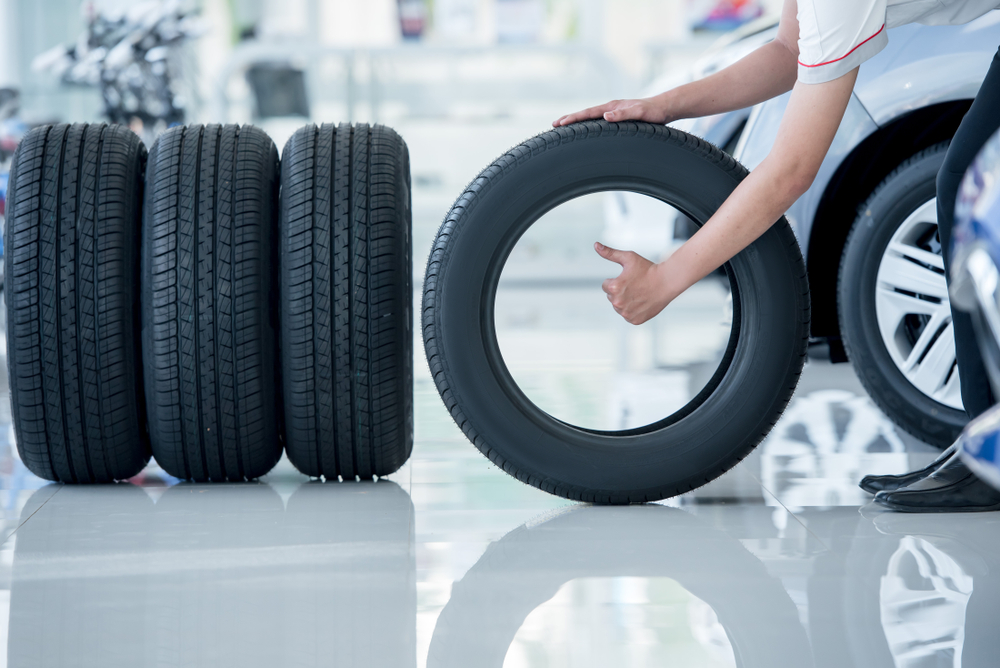 Summer tires are designed specifically to deliver dry- and wet-weather traction in moderate or warm weather. They sharpen steering response, increase cornering traction by an order of magnitude, and stop your vehicle in much less distance. But they do so at a cost: most summer tires only work well at temperatures of about 40 degrees Fahrenheit and above. As outside temps fall toward freezing, the tires can feel skittish and behave inconsistently; they lose a large portion of their grip to the point that they act like they are on a wet or even icy road. More than one driver of a powerful car, unaware of the temperature sensitivity of its summer tires, has lost control and crashed on a cold day.
Summer tires are designed specifically to deliver dry- and wet-weather traction in moderate or warm weather. They sharpen steering response, increase cornering traction by an order of magnitude, and stop your vehicle in much less distance. But they do so at a cost: most summer tires only work well at temperatures of about 40 degrees Fahrenheit and above. As outside temps fall toward freezing, the tires can feel skittish and behave inconsistently; they lose a large portion of their grip to the point that they act like they are on a wet or even icy road. More than one driver of a powerful car, unaware of the temperature sensitivity of its summer tires, has lost control and crashed on a cold day.
As with all-season tires, summer rubber comes in several varieties. Tire Rack divides these tires into three main groups by escalating capability: ultra-high performance on the bottom rung, followed max performance and extreme performance. Summer tires come on cars such as Porsches, Corvettes, Mercedes-AMGs, and Mustangs.
$166 at Tire Rack
$180 at Tire Rack
$270 at Tire Rack
Called "snow tires" in the past, winter tires are designed to provide maximum traction in snow and in slippery winter conditions—and the traction they provide in those situations is not matched by any other category of tire. Even an all-wheel-drive vehicle on all-season tires cannot match the stopping or turning capability of a similar two-wheel drive vehicle fitted with four winter tires, a point we have proven in our own winter-tire testing.
Winter tires are designed to work well in the cold-weather months, but they don't handle or wear as well as all-season or summer tires once the weather warms up. They should be considered as a second set of tires for your vehicle if you live where snow flies annually. We fit all of our long-term test vehicles with winter tires and they've proven their worth many times over.
We fit all of our long-term test vehicles with winter tires and they've proven their worth many times over.
Why use winter tires? If you live in the northern states, we recommend purchasing a set of winter tires. Their deep treads are engineered to deliver a significant traction improvement, and do they ever work. You'll feel safer and be safer, not to mention more relaxed when driving in snow. Retailers such as Tire Rack will sell you a set of snows mounted on steel wheels that you can swap on when winter rolls around. Here at Car and Driver, we swear by them.
Tire Size and Other Factors
Most consumers choose to replace the worn tires on their vehicle with something equivalent in size and capability. This makes a lot of sense; your car was engineered to work well on the type and size of tires it came on, so fitting an identical or similar replacement set would maintain the performance and safety your vehicle was designed to deliver. (We'll get to upgrading later on).
(We'll get to upgrading later on).
To inform your decision process, you'll need to know your vehicle's tire size and speed rating, and you'll also want to consider how many miles you'll get out of any new tires you are considering (this is called tread wear). Much of that information is printed on the sidewalls of the tires that are on your car right now. It's also available in most owner's manuals, online, and at tire dealers. (We suggest cross-checking those sources to make sure you've got the right information.)
Here's how to read the most important data imprinted on your tires' sidewalls. (For an in-depth look at how to read all of the information on a tire sidewall, click here.)
KEY: 1) Tire width; 2) Aspect ratio; 3) Radial-tire designation; 4) diameter; 5) Load rating with speed rating; 6) Heaviest spot on tire; 7) Tread-wear rating; 8-9) Traction and temperature ratings; 10-11) Mud-and-snow or three-peak-mountain rating; 12) Vehicle-specific marking; 13) Tire-materials list and manufacturing information
Tire SizeIf you're going to replace your tires with something equivalent, you will need to know the proper size. The size of car and light truck tires is usually expressed in a short series of numbers and letters that read like this (as seen in the above illustration): 245/40-R18. The first number indicates the width of the tire at its widest point in millimeters. The number after the slash is what's called the aspect ratio, which indicates how tall the sidewall is as a percentage of the width. The higher the number, the taller the sidewall. The squat tires fitted to sports cars and muscle cars, called low-profile tires, have aspect ratios of 30–40. Family sedans and SUVs are in the 45-60 range or taller. The final number in the series is the diameter of the wheel in inches that the tire must mount to. The "R" indicates it's a radial tire, which virtually all of today's tires are.
The size of car and light truck tires is usually expressed in a short series of numbers and letters that read like this (as seen in the above illustration): 245/40-R18. The first number indicates the width of the tire at its widest point in millimeters. The number after the slash is what's called the aspect ratio, which indicates how tall the sidewall is as a percentage of the width. The higher the number, the taller the sidewall. The squat tires fitted to sports cars and muscle cars, called low-profile tires, have aspect ratios of 30–40. Family sedans and SUVs are in the 45-60 range or taller. The final number in the series is the diameter of the wheel in inches that the tire must mount to. The "R" indicates it's a radial tire, which virtually all of today's tires are.
Tires also carry a speed rating, which indicates not only how fast they can safely go for an extended period of time, but also the overall performance potential of the tires.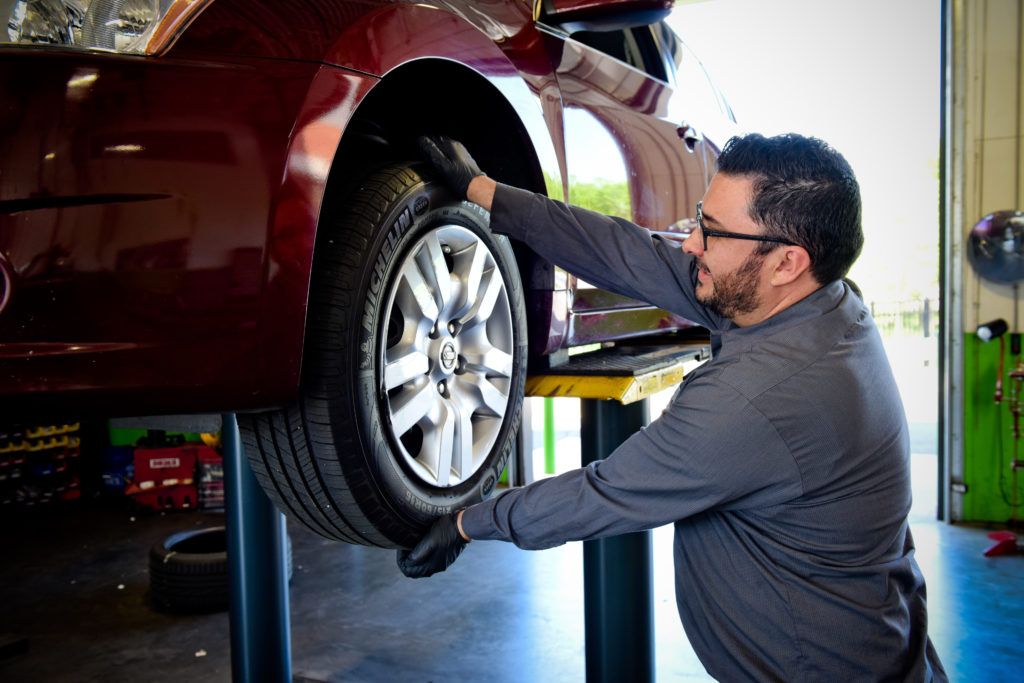 Tires for high-performance cars have a higher speed rating than those for mainstream family sedans and SUVs. The speed rating of the original tires that came on your car were matched to the maximum speed the car could attain—plus a significant built-in safety margin. This speed rating is expressed as a letter in the alpha-numeric code that immediately follows the tire size. Letters range from L to Y, and cover maximum speed ranges from 75 mph to more than 186 mph.
Tires for high-performance cars have a higher speed rating than those for mainstream family sedans and SUVs. The speed rating of the original tires that came on your car were matched to the maximum speed the car could attain—plus a significant built-in safety margin. This speed rating is expressed as a letter in the alpha-numeric code that immediately follows the tire size. Letters range from L to Y, and cover maximum speed ranges from 75 mph to more than 186 mph.
The are two pieces of data that will help you estimate how many miles you can expect from a set of tires: the tread-wear rating and the tire mileage warranty. The tread wear rating is listed as a number on the tire sidewall after the word "treadwear". The higher this number, the more likely the tire will last longer. But the tests that are used to determine treadwear aren't precise, so there is a lot of variability in this number.
A better way to gauge potential tire life, and to compare the expected longevity of different tires you might be considering, is to look at the manufacturers' tread-life warranties.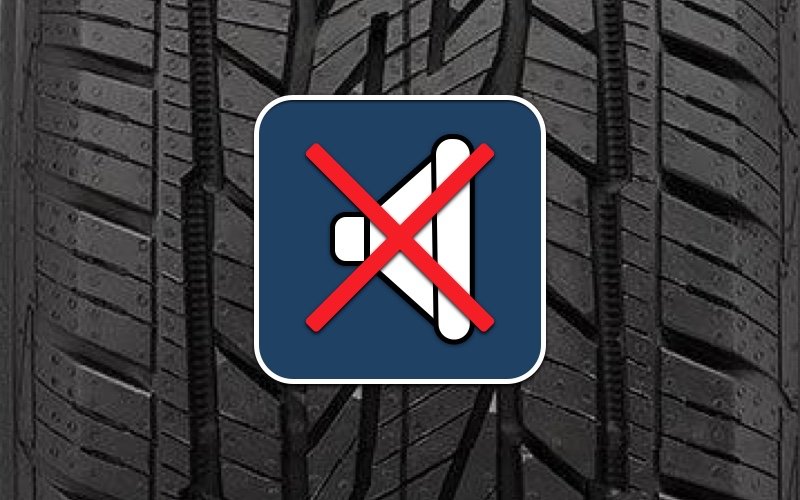 Many but not all tires carry a tread-life warranty in addition to manufacturing-quality/defect warranties. This information can be found online (like this example from tirerack.com), or in the tire maker's marketing materials. The industry's general rule is that about three-quarters of all drivers will find that their tires last at least last as long as the mileage listed in the tread life warranty. Generally, if your tires wear out before the guaranteed mileage bogey, you can get a credit for the percentage of miles you came up short, which you can then apply to the purchase of a new tire. (Tire dealers routinely handle this transaction.)
Many but not all tires carry a tread-life warranty in addition to manufacturing-quality/defect warranties. This information can be found online (like this example from tirerack.com), or in the tire maker's marketing materials. The industry's general rule is that about three-quarters of all drivers will find that their tires last at least last as long as the mileage listed in the tread life warranty. Generally, if your tires wear out before the guaranteed mileage bogey, you can get a credit for the percentage of miles you came up short, which you can then apply to the purchase of a new tire. (Tire dealers routinely handle this transaction.)
Numerous automakers fit their cars with run-flat tires from the factory. These tires are capable of driving for short distances at low speeds even after a puncture has left them without air, allowing you to reach home or a repair facility without needing to change a flat on the side of the road. If your vehicle came on run-flats you have the option of replacing them with conventional tires and carrying a spare (but beware that some cars fitted with run-flats actually do not have a trunk compartment for a spare). Or, you can replace your worn run-flats with another set of run-flats. And now that tire-pressure monitoring systems are compulsory equipment in new cars, you could even fit run-flats on a car that didn’t originally come with them.
If your vehicle came on run-flats you have the option of replacing them with conventional tires and carrying a spare (but beware that some cars fitted with run-flats actually do not have a trunk compartment for a spare). Or, you can replace your worn run-flats with another set of run-flats. And now that tire-pressure monitoring systems are compulsory equipment in new cars, you could even fit run-flats on a car that didn’t originally come with them.
Run-flat tires do have downsides. Their stiff sidewalls, which are required to hold the tire up when deflated, tend to make the car ride noticeably harder over rough pavement, but tire tech is continually improving and run-flats aren’t nearly the penalty they were a decade ago. Choice is also more limited than with conventional tires and run-flats are premium-priced. In general, we'd recommend swapping to conventional tires and carrying a spare or mini-spare if possible.
In general, we'd recommend swapping to conventional tires and carrying a spare or mini-spare if possible.
There's one more decision you need to make: do you simply replace the tires on your vehicle with something equivalent, or upgrade?
If you're going to replace what came on the car with something equivalent, you're ready to go. Peruse the online resources like Tire Rack to compare tires, and then either buy from one of them or head to a local tire store. The advantage of buying online is that you can get the exact tires you want; different brick-and-mortar tire stores sell different brands of tires. The online retailers have relationships with the chain tire stores, which will mount the tires you bought on the internet on your wheels (for a small fee) even though you didn't buy them there.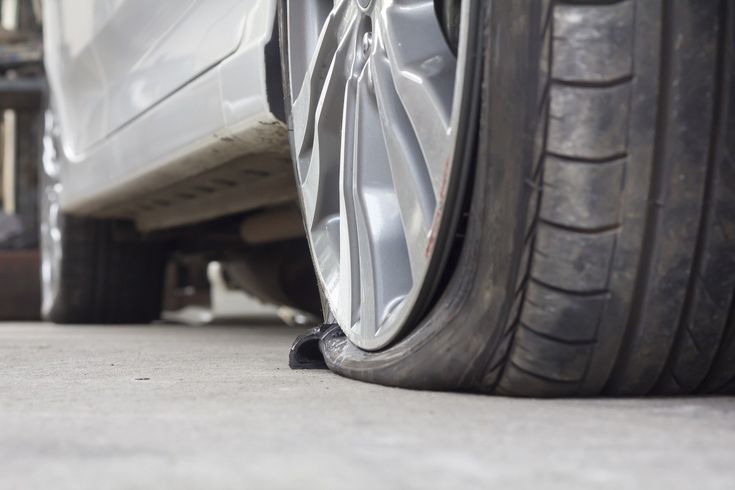 Tire Rack has a decision guide to help you find the tires that fit your car.
Tire Rack has a decision guide to help you find the tires that fit your car.
This is more complicated than simply replacing your tires, as you have several ways to go. You can choose a higher-performance tire of the same size on your current set of wheels by substituting, say, a high-performance all-season tire for a standard all-season—if you can find one that fits exactly. Or you can choose a set of wider, lower-profile summer or high-performance all-season tires, but this is trickier. You need to know if the tires will fit without rubbing on the suspension or body parts—a definite safety issue. Here, consulting one of the experts at Tire Rack is a must, as they have this information for many cars. You can also try checking an online forum for your make and model of car (if one exists).
Many vehicles can be had from the factory with several different tire sizes—Honda Civics, for example, come with tires ranging from 215/55-R16 to 245/30ZR-20—so going to a larger-diameter wheel might work. But know that fitting lower-profile rubber will almost always require a larger-diameter wheel. The outside diameter of your tires needs to remain constant; everything from your vehicle's suspension to its ground clearance to its gearing is affected by the overall size of the tires. As the sidewall gets slimmer, the wheel must grow to compensate. Use this size guide to see how switching to a lower-profile tire affects wheel diameter.
But know that fitting lower-profile rubber will almost always require a larger-diameter wheel. The outside diameter of your tires needs to remain constant; everything from your vehicle's suspension to its ground clearance to its gearing is affected by the overall size of the tires. As the sidewall gets slimmer, the wheel must grow to compensate. Use this size guide to see how switching to a lower-profile tire affects wheel diameter.
Wider, lower-profile higher-performance tires can also make the car ride rougher, wear faster, be noisier, and influence the steering, possibly causing you to have to make more steering corrections on the Interstate. Low-profile tires will also probably be more prone to damage from potholes, something we experienced with one of our long-term cars, which blew out a dozen of its low-profile tires in the course of 40,000 miles on our rutted Michigan roads. And they'll almost definitely be more expensive, plus you'll have to buy a new set of wheels. You'll need to consider all of these issues carefully before you make the leap.
You'll need to consider all of these issues carefully before you make the leap.
For everything you need to know about buying and maintaining tires, click here.
This content is imported from OpenWeb. You may be able to find the same content in another format, or you may be able to find more information, at their web site.
One of the most important purchases as car owners is tires, as this is the vehicle’s most important safety feature. Let’s face it – after the often intimidating car buying experience, the last thing you want is a repeat when replacing your car’s tires. Here are 9 important tire buying tips to make the buying experience a little better.
A Girls Guide to Cars may earn a commission from links contained on this page, but don’t worry, we only recommend products we love? And, there is no additional cost to the buyer when a purchase is made by clicking these links.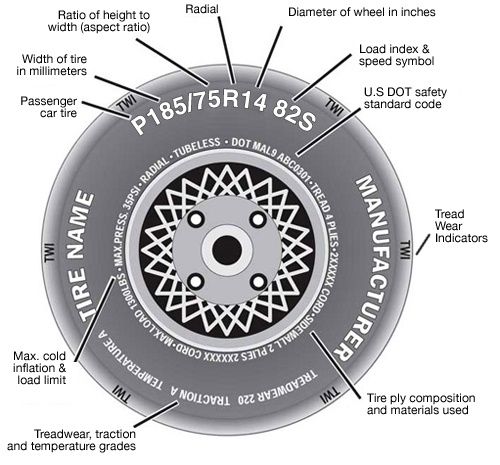
Growing up with my mechanic dad, believe me, I know the importance of good tires. It’s the only thing between you and the road. You and your family’s safety depends on good tires. Keeping them properly inflated saves fuel. Worn tread is not a good thing and can cause an accident. Yeah, yeah, check all that.
But if you’re like me, buying tires ranks right there with going to the dentist. You’d really rather do ANYTHING than make an appointment. You know you have to do it, but you put off the purchase until it’s perhaps the last minute.
Let’s remove the stress of the tire buying process with these 9 secrets you should know about buying tires.
9 Tips for Buying Tires1. All tires are not created equalYes, tires can all look alike. They are round. They are made of rubber. They have treads. And they are perhaps THE most important safety feature of your vehicle. Just like shoes, tires are made by multiple companies including Bridgestone, Continental, Goodyear, Michelin, Hercules, Dunlop, Yokohama, and more. And like designer shoes, choosing the right tire brand depends on so many facets of your vehicle and driving habits.
And like designer shoes, choosing the right tire brand depends on so many facets of your vehicle and driving habits.
For example, if you live in the northeast, winter tires with its softer rubber designed to grip on a slippery surface will give you more traction in the snow. (You wouldn’t wear stilettos during a winter snow storm, right?) If your home is in Florida, winter tires wouldn’t make any sense, while summer tires (made of tougher, more rigid rubber) might last longer in the hot weather. The most popular tires are all season (all weather) which perform well in most driving situations.
Checking the tread on the Michelins; put a penny head-down into the tread and if you can’t see the top of Lincoln’s head, your tread is good. Photo: Scotty Reiss
2. Know when it’s time to replace your tiresYou don’t have to be an experienced auto mechanic to know enough to be safe. Take time to LOOK at your tires – all 5 of them! Yes, it’s important to check your spare, too.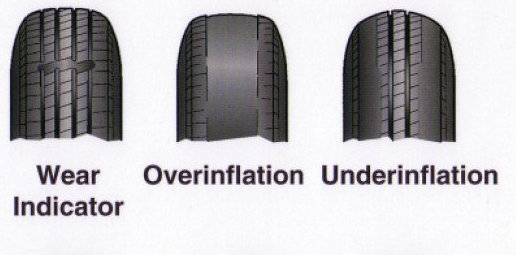 Do they look, worn or damaged? Do they pass the penny test? Insert a penny into the tire tread with Lincoln’s head pointing toward the center of the tire. If its head isn’t partially hidden by the tire, the tire needs to be replaced. And it’s okay to confirm your results and have your tires checked by a professional.
Do they look, worn or damaged? Do they pass the penny test? Insert a penny into the tire tread with Lincoln’s head pointing toward the center of the tire. If its head isn’t partially hidden by the tire, the tire needs to be replaced. And it’s okay to confirm your results and have your tires checked by a professional.
Perhaps the biggest mistake consumers make is choosing the right tire. And this is as easy as getting down and dirty to look at the code on the sidewall of your tire, a combination of letters and numbers. These indicate the size, type, and performance of the tire.
The first three-digit number in the tire size refers to the tire width. For example, my 2014 Ford Escape’s tire size is 235/45 R19 tire, the tire width is 235 millimeters, measured from sidewall to sidewall. Aspect Ratio is the ratio of the height of the tire’s cross-section to its width.
The two-digit number after the slash mark in a tire size is the aspect ratio. For example, in a size 235/45 R19 tire, the 45 means that the height is equal to 45% of the tire’s width. The bigger the aspect ratio, the bigger the tire’s sidewall.
For example, in a size 235/45 R19 tire, the 45 means that the height is equal to 45% of the tire’s width. The bigger the aspect ratio, the bigger the tire’s sidewall.
The letter “R” in a tire size stands for Radial, which means the layers run radially across the tire.
Wheel Diameter is the size of the wheel measured from one end to the other. This is the size of the wheel that the tire is intended to fit. A size 235/45 R19 tire is made for a wheel with a 19″ diameter.
While this may sound Auto Geek to you know, tire codes are important to know when pricing your new tires as it’s the unique descriptor.
Tire buying tips include getting down and looking at the tire codes on the sidewall. Photo: Pixabay.com
4. Size does matterWhen you do finally take the step to shop around (see below), most tire dealers will ask the make, model, and year of your car. But you may still have different size options as well. Your choices may include bigger tires fill the wheel well, or smaller less expensive tires.
Whatever your choice, make sure the tires fit the recommended speed rating; can handle your car up to a designated top speed; and can accommodate the weight of your car (load rating) + passengers and gear. Check your tire’s sidewalls for these codes, or simply open your owner’s manual.
Size does matter. Do your homework when buying new tires for your vehicle. Photo: Pixabay
5. Decide what you need from replacement tiresChances are you’ve been driving the car for some time. Think about your driving experience. Is something not up to par? Are you looking for a more comfortable ride? More steering control? Less noise? Longer wear? Tires that are standard with a new car are usually one size fits most, so if you feel, you might be better with a new brand, then ask your tire technician for your options when buying tires.
I recently replaced my car tires for the first time since purchasing my Ford Escape. The Continental tires worked great in the Colorado winter, driving in the mountains, and even on some off-road trips. And they lasted over 40,000 miles. So if it’s not broke, then why change the tire brand?
And they lasted over 40,000 miles. So if it’s not broke, then why change the tire brand?
Tire buying tips include considering your driving habits, such as if you’re a lover of road trips. Photo: Pixabay.com
6. Shop aroundJust like any consumer purchase, drivers have a lot of options. Go ahead and take the information you’ve gathered from above, and shop around. You can return to your dealership, although oftentimes this is the more expensive option. (NOTE: My Ford dealership actually offered to match any other tire quote, so ask them about price matching.)
For convenience, many consumers first consider their local tire shop or discount tire store. It’s often a matter of convenience and usually located closer to your home. Prices are usually reasonable, and I’ve discovered that the service managers or technicians are very helpful. Quotes are also as simple as a phone call or stopping by the store.
Or, you can order your tires through Amazon or a third party supplier like Tire Rack or Tirebuyer; these sites promise the lowest possible price and are great for people who have a favorite mechanic or can handle the installation themselves.
All season, summer or winter tires? What’s a girl to do? With these 9 simple tips for buying tires, you’ll know what to do. Photo: Pixabay.com
7. Read the reviewsTake all your options and quotes and start reading the reviews. See what the experts say about the tires. Expensive doesn’t always equal the best tires. Sometimes inexpensive tires wear as well as their premium competitors. But sometimes you do get what you pay for.
Subscription service like Consumer Reports separate tires into categories, such as braking, hydroplaning, tread life, ride comfort, and more. But there are so many reviews out there available simply at a click of a mouse – google your car, tire brands, etc. When you’ve read all the reviews, it’ll help you understand the differences, allow you to ask for what you want, and hone in on buying tires.
8. Decide what to spendGather your reviews and compare these to your quotes. Be sure to consider a warranty when buying tires. The warranty gives you an idea of how many miles you should get out of the tires. On most cars, tires last three to four years (40,000 -80,000 miles), which is covered by the warranty, which means that you’ll get a discount toward the remaining mileage if a covered damage incident occurs. However, if you traditionally put a lot of miles on your car, consider adding hazard insurance, usually only $15-$20 per tire. Also, many of these local tire stores include complimentary tire rotations, flat repairs, and more, so be sure to ask!
The warranty gives you an idea of how many miles you should get out of the tires. On most cars, tires last three to four years (40,000 -80,000 miles), which is covered by the warranty, which means that you’ll get a discount toward the remaining mileage if a covered damage incident occurs. However, if you traditionally put a lot of miles on your car, consider adding hazard insurance, usually only $15-$20 per tire. Also, many of these local tire stores include complimentary tire rotations, flat repairs, and more, so be sure to ask!
Since tires can be a huge expense, consider financing options. On my recent tire purchase, I spent over $1,100 for 4 new tires. I had saved half of that, so instead of putting the balance on a credit card, I applied for Discount Tire’s 9 months same as cash financing program. I qualified! Just be sure to pay off the loan BEFORE the 9 months as the interest rates after the interest-free period are extremely high!
9. Purchase your tires with confidenceYou’ve done your homework.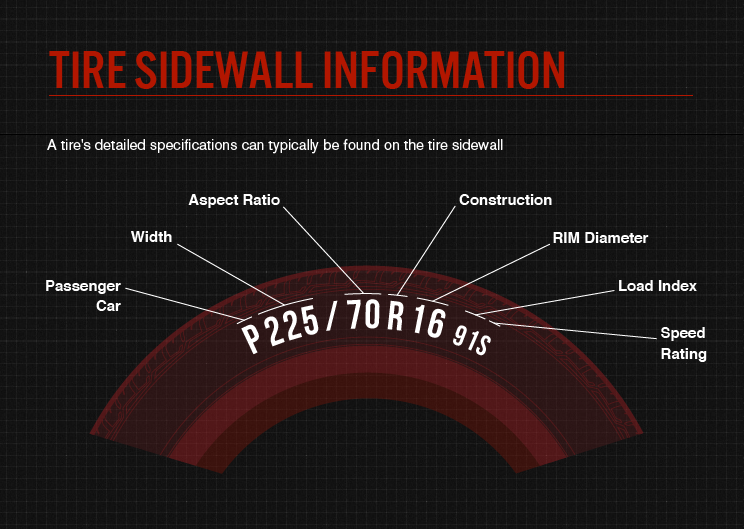 You’ve shopped around. You’ve read the reviews. Prepared your budget. Now, go ahead and take the plunge!
You’ve shopped around. You’ve read the reviews. Prepared your budget. Now, go ahead and take the plunge!
With these 9 tips for buying tires, purchase your tires with confidence and take your car on the road.
Diana Rowe is a Denver-based freelance writer, with more than 16 years experience and hundreds of articles published both in print and online. As web editor of SheBuysCars, Diana credits her love of cars, motorcycles and speed to her Dad, a long-time gearhead (mechanic). FMI: www.DianaRowe.com and www.TravelingInHeels.com
With thousands of tires available, choosing the right tire for your car may seem complicated.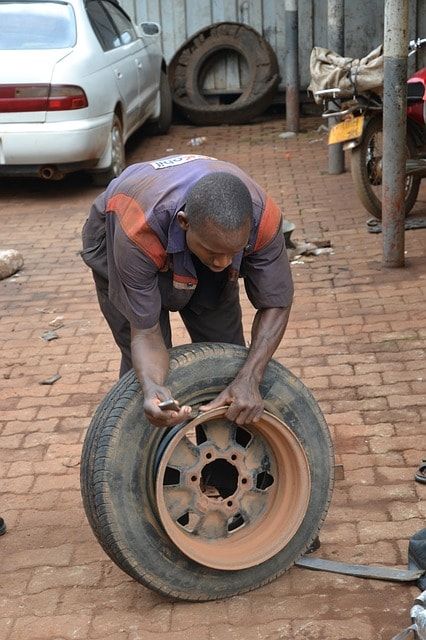 In order to ease task, our editors tried to describe the main points, following which, you will definitely pick up the necessary car tires.
In order to ease task, our editors tried to describe the main points, following which, you will definitely pick up the necessary car tires.
Tire size
First, set the size of your vehicle. You can find it on sidewall of your tire and in your vehicle manual. It looks like this:
What do the numbers mean?
1.Tread Width (mm)
2.Profile Width (in % of tread width)
3.Inner Diameter (in inches)
4.Load Index
5.Speed Index
?Lower profile tire provides a firmer ride with improved handling, but tends to be noisier and more expensive than tires with a higher aspect ratio.
Speed and load index. The speed rating indicates the maximum the speed at which a tire can carry its corresponding nominal load.
Once you know the correct tire size for your car, you you need to think about the quality of the tire that best fits your needs. Any tires sold will fit strict safety standards, but a better quality tire will last more and give you a better driving experience.
Any tires sold will fit strict safety standards, but a better quality tire will last more and give you a better driving experience.
Premium tires
Thanks to the high quality construction and materials used in production, premium tires typically withstand 25,000 to 40 thousand km with normal use.
Heavy investment in research, design and technology means tires premium class Win in braking performance, fuel economy, grip (especially in wet conditions) and reduce noise levels.
Premium brands: Bridgestone, Continental, Dunlop, Goodyear, Michelin and Pirelli.
Mid range tires
If premium tires don't fit your price range, you you can consider mid-range tires. Brands may not be as good are known as premium brands, but you can still appreciate the highest quality products.
The mid-price segment can provide excellent value for money quality, and depending on the type of driving you follow, they can also have a long service life.
Tires of the middle price segment: Avon, BF Goodrich, Falken, Firestone, Hankook, Kumho, Toyo, Uniroyal or Yokohama.
Budget tires
Budget tires are a risk, sometimes not justified. Summer budget tires will perform in the same way as premium tires, but only in the dry coating. Wet roads are the real enemy of cheap rubber.
Examples: Rosava, Cordiant, Landsail, Goodride, Evergreen or Belshina.
Vehicle type
Cars and light trucks, crossovers, SUVs and vans all require special tires, so make sure you have the ability choose what you need. As a rule, tires have special markings or designations. For example SUV - for crossovers, VAN or Cargo - for light trucks, HP and UHP for high-speed cars, etc.
Seasonality
The most important thing. In the past, most drivers had a habit of keeping summer tires on your car all year round, but over time everything has become strictly adhere to seasonality. You can consider winter or All season tires for optimal performance.
You can consider winter or All season tires for optimal performance.
Conclusion
moments. It is necessary to use the simple points of this manual - and Your winter trip will not be unpredictable, and summer will not bring discomfort.
| What winter tires to buy? Expensive or cheap? To begin with, it is worth knowing the division into classes of car tires. It is useful to know when to buy expensive premium tires and when to choose cheaper analogues from the economy segment... 06 September 2022, 10:06 | |
| Tires for electric vehicles - which ones to choose? Driving an electric car is different from driving a car with an internal combustion engine. This is felt by both the driver and passengers.  For tires, another type of drive is also important. Rubber on.. For tires, another type of drive is also important. Rubber on.. 09 August 2022, 11:58 | |
| Who are low profile tires suitable for? Car wheels are the first thing that comes to mind in the context of visual tuning. Not every car will be better after installing a tailgate spoiler. And big.. 18 April 2022, 15:42 | |
| What are UHP (HP) tires? Best choice for summer High Performance and Ultra High Performance tires are becoming increasingly popular all over the world. Our cars are getting faster, more efficient, accelerate better and provide more confidence.. February 28, 2022, 15:06 | |
| Date of manufacture of Belshin wheels Recently, cases of distrust on the part of customers have become more frequent, regarding the date of manufacture of products of the Belshina trademark.  Indignation is caused by not quite neat standard forms indicating the week and .. Indignation is caused by not quite neat standard forms indicating the week and .. 16 February 2022, 12:59 | |
Refer to the owner's manual for the recommended tires for your vehicle. As a rule, at the end of the brochure - where technical specifications and recommended fluids are given. Or, alternatively, the dimensions of the dimensions of the tires approved for your car can be indicated on the B-pillar under the driver's door lock bracket, on the gas tank hatch, or even on the inside of the glove box lid (on some localized models).
As a rule, several allowable dimensions are indicated there.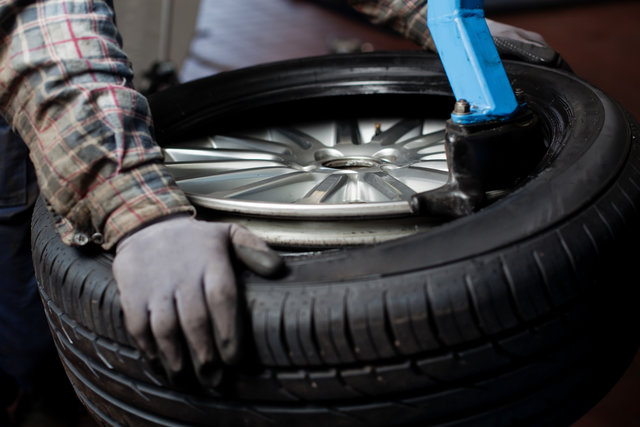 However, if you are not going to change rims (officially - “wheels”, because what we used to call “wheels” is called “wheel assembly”), you should choose tires with exactly the same bore diameter.
However, if you are not going to change rims (officially - “wheels”, because what we used to call “wheels” is called “wheel assembly”), you should choose tires with exactly the same bore diameter.
Dunlop's popular summer tire model. It is produced in a huge number of variations, so the price for one tire can be completely different. Tire diameters range from 15 to 22 inches, widths from 195 to 325mm, and profile heights range from 60mm to the low profile 30mm.
Older versions of this tire can provide a vehicle with a speed of up to 300 km/h (index Y). The advantages of the model include that it holds both wet and dry roads well. The tire itself is relatively strong and resists cuts and hernias to a reasonable extent. The downside of this strength is rigidity - the car on this rubber can become somewhat shaky, and the bumps in the road will be felt more strongly. Some drivers also complain about the acoustic accompaniment - with these tires in the cabin it can become noisier.
Wide range of sizes, quite strong, excellent steering
Too stiff, noisy
Summer tires from an Italian-Chinese tire manufacturer. Cinturato P1 Verde can be easily found in standard equipment of some cars. For example, they put it on the "stuffed" Lada Granta. The tire is available in several sizes. Diameter - from 13 to 20 inches, width - from 145 to 275 mm, profile - from 70 to 30 mm. The tire is not afraid of ruts and feels good even in a sharp turn. Pits Cinturato P1 Verde endures stoically, but do not overdo it - the tire sidewalls are relatively soft.
Because of this, you can easily get a hernia or a cut, after which the tire will go to a landfill. The tread pattern is designed in such a way that the rubber is not afraid of hydroplaning. But even on a muddy primer it’s better not to meddle on it - the car has every chance of getting stuck.
Moderate cost, the car will turn more confidently, not afraid of aquaplaning
Delicate sidewalls, you can get stuck on it in the mud
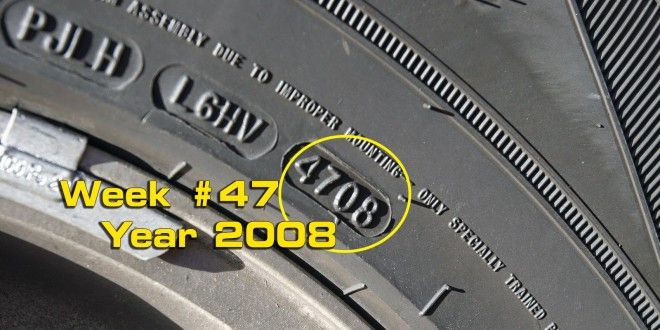 Toyo Proxes CF2
Toyo Proxes CF2 The tire from the Japanese brand Toyo is by no means created for the "eaters" of kilometers of tracks. This is a balanced and inexpensive summer tire mainly for city driving. Available in diameters 13-20 inches, widths 165-245 mm and profile 40-80 mm. Rubber in motion is soft and quiet.
Tires provide good grip, but in tight corners (especially if the profile is higher) they can break. Someone thinks that the sidewalls of the Toyo Proxes CF2 are soft, but they definitely won’t suffer from contact with the curb.
Well, the tread gives out a purely road tire purpose - even on a dirty road after rain, the car can start to slip.
Relatively inexpensive, quiet, good grip on dry pavement
On a profile from 55 mm, there may be cracking when entering a turn, you can skid even on a slightly wet muddy road
An elite tire for elite cars - this is how the Pilot Sport 4 S can be characterized. The special position of the tire can be understood from the considerable price - one wheel costs more than a set (with a spare tire) of rubber for a small car. The sizes in which rubber is produced correspond to: diameter from 18 to 22 inches, width from 135 to 355 and low profile 25-45 mm. Moreover, for all tires, the speed index is indicated by Y (up to 300 km / h). Of course, on public roads, even on a powerful car, such speeds are incredible, but on a sports track, such a tire will come in handy. Needless to say, this rubber provides excellent grip and steering in corners.
The special position of the tire can be understood from the considerable price - one wheel costs more than a set (with a spare tire) of rubber for a small car. The sizes in which rubber is produced correspond to: diameter from 18 to 22 inches, width from 135 to 355 and low profile 25-45 mm. Moreover, for all tires, the speed index is indicated by Y (up to 300 km / h). Of course, on public roads, even on a powerful car, such speeds are incredible, but on a sports track, such a tire will come in handy. Needless to say, this rubber provides excellent grip and steering in corners.
The low profile imposes its limitations - even small potholes on the roads should be avoided, and the sidewall may not withstand contact with the curb. The flip side of excellent grip is also quick wear - rubber, as they say, can go away in a season.
And one more feature - in the off-season, when the air temperature drops below +10 degrees, the tires start to make excessive noise.
Provides excellent handling (of course, if the car matches), clings to asphalt
Afraid of potholes, pits and parking - low profile, the price seems too high even against the background of classmates, increased tread wear It is presented on the market in several dimensions: diagonal - from 13 to 18 inches, width 145-245 mm, height - 40-70 mm.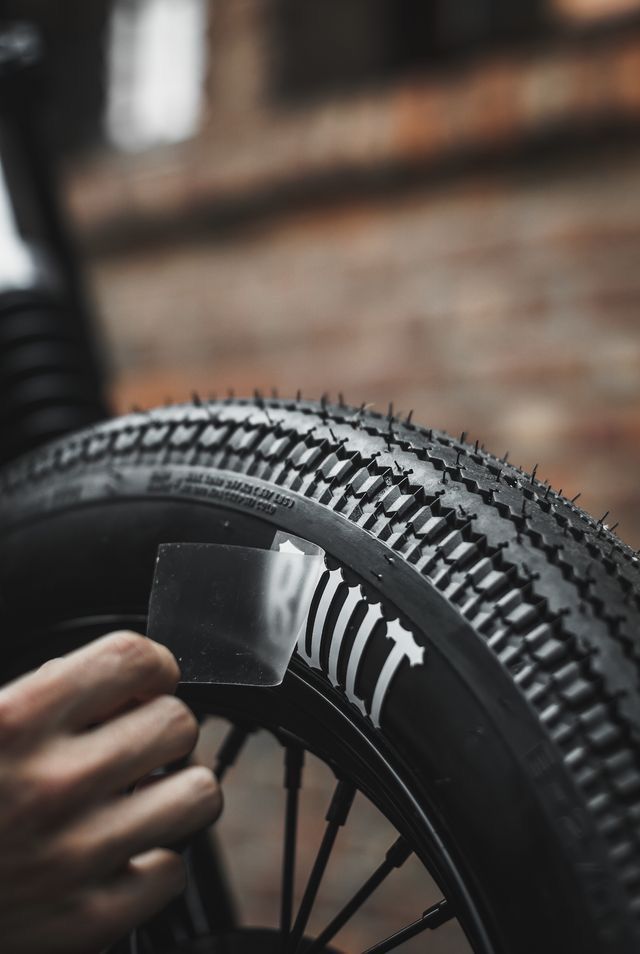 On the road, the Bluearth ES32 has proven itself to be a quiet tyre, with medium stiffness and durability. Low rolling resistance can also be recorded as an asset of the model, which means that the roll increases and fuel consumption decreases.
On the road, the Bluearth ES32 has proven itself to be a quiet tyre, with medium stiffness and durability. Low rolling resistance can also be recorded as an asset of the model, which means that the roll increases and fuel consumption decreases.
By the way, the tires of this series, which are sold in Russia, are produced at the plant in Lipetsk (which does not affect the final quality of the product). Some motorists complain about the soft sidewall, but the tire is relatively new on the market, and there are no real cases when the curb stone pierced the wheel.
You can complain about the tread pattern, in which small stones strive to fill up, after which the wheels begin to click on asphalt.
Accessibility, quietness, low rolling resistance
The tread pattern literally collects small stones, perhaps the sidewalls are not strong enough. You can take a closer look at Belshina Artmotion. It is available in four diameters: 13-16 inches. The width of the profile can be from 175 to 215 mm, and the height - from 55 to 70 mm (low profile is not about Belshina). Despite the low price, the tires hold the road well and are not afraid of hydroplaning.
The width of the profile can be from 175 to 215 mm, and the height - from 55 to 70 mm (low profile is not about Belshina). Despite the low price, the tires hold the road well and are not afraid of hydroplaning.
Users' opinions differ about acoustic comfort - some motorists find it noisy, while others complain about howling. Rubber by the standards of our time is “oak”, which not everyone will like.
Belshina's problem is its unstable quality. Someone is unlucky and he is faced with a bundle of rubber after 10 thousand km. Other car owners struggle with the imbalance by securing loads.
Very cheap, damage in normal use is rare
Can hum, unstable quality
The considerable price for this model from Bridgestone is explained by two points. Firstly, although the tire is road, it is focused on SUVs. Secondly, in the Alenza 001 line, you can find models made using RunFlat technology, when you can drive up to 80 km on a flat tire. But you will have to pay extra for this option. The tire is produced in diameters from 16 to 22 inches, width can be from 215 to 315 mm, and height - 35-70 mm. The tire handles rutting and hydroplaning very well.
But you will have to pay extra for this option. The tire is produced in diameters from 16 to 22 inches, width can be from 215 to 315 mm, and height - 35-70 mm. The tire handles rutting and hydroplaning very well.
Car enthusiasts love this tire for its handling at high speeds. Wear resistance is also good. But you need to be prepared for noise, pushes into the cabin almost from the road markings and, no matter how strange it sounds, imbalance. Some buyers encounter it on new tires.
Of course, everything can be fixed with balancing weights, but is it necessary?
Crossover Special, Predictive Handling, RunFlat as option
Nervously reacts to the road profile, imbalance is possible
A popular summer tire model from the Finnish Nokian has been produced for several years. Available in three sizes - 16-18 inches. The width of the profile can be 205-245 mm, and the height - 40-55 mm. Handling on dry and wet pavement is not bad, good rubber bites into the pavement and when braking.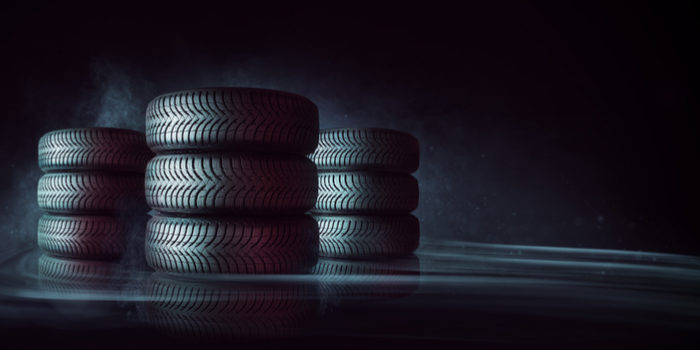
Tires are relatively soft and quiet. In addition, despite their road nature, they feel good in light dirt (but without fanaticism). The tire seems to be strong, but there is a marriage in the form of tread peeling. There is another problem - after 100 km / h, the tires begin to buzz a lot.
Well established in the market, handling, hard sidewalls
There are defects, hum at high speed
Korean summer tire, produced with a speed index up to 300 km / h. Can be found in diameters from 16" to 20", widths 195-295mm and profile heights 30-60mm. The tire feels good at high speeds, and grip is good on both dry and wet roads.
The manufacturer managed to make rubber soft in motion, the sides of which are not afraid of contact with the curb. But it was not without drawbacks - motorists compare the noise from this rubber with winter Velcro. Someone complains about the resource - the tires wear out relatively quickly.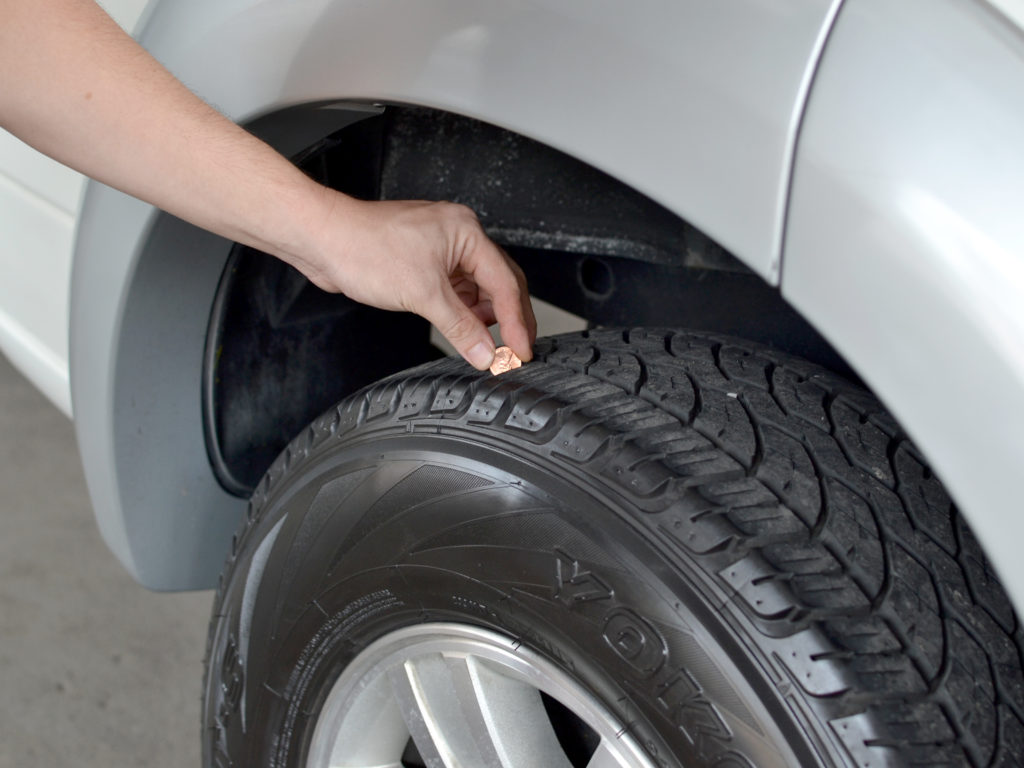
Handling on wet and dry roads, reinforced sidewall, soft in motion
Noisy, resource is not the largest
We figured out the models of summer tires worthy of attention. Now it's worth figuring out how to choose tires for a specific car and your driving style. This will help us Alexander Studkov , owner of a tire fitting station.
Refer to the owner's manual for the recommended tires for your vehicle. As a rule, at the end of the brochure - where technical specifications and recommended fluids are given. Or, alternatively, the dimensions of the dimensions of the tires approved for your car can be indicated on the B-pillar under the driver's door lock bracket, on the gas tank hatch, or even on the inside of the glove box lid (on some localized models).
As a rule, there are several allowed dimensions. However, if you are not going to change rims (officially - "wheels", because what we used to call "wheels" officially - "wheel assembly"), it is worth choosing tires with exactly the same bore diameter. Don't quite understand what I mean? Do you find it difficult to read the numbers "encrypted" in the dimension? In fact, everything is simple!
Don't quite understand what I mean? Do you find it difficult to read the numbers "encrypted" in the dimension? In fact, everything is simple!
For example, in the specifications or on the tire mounted on the wheel of your car it says: 205/65/R16, where
After you have decided on the dimension: whether it is the same size, or different, but with the same landing radius, or with a different one, but then you have to buy the appropriate wheels ("discs"), we proceed to the selection of the best summer tires for your car.
Summer tire tread pattern can be symmetrical non-directional, directional or asymmetric. The first option is considered the most versatile for the city and the highway. Versatility adds to them and the fact that the tires can be easily interchanged, this does not degrade their properties. With directional symmetry, wet contact is greatly improved. But you need to put them strictly in the direction of rotation. An asymmetric pattern can also be called universal - the characteristics of such a tire are highly dependent on what engineers have invested in it. For example, part of the picture may be responsible for working on dry pavement, and the other - on wet pavement. Install such tires carefully, based on the markings on the wheel.
The speed at which you can drive on a particular summer tire depends on the speed index of a particular model. It is indicated by English letters from M (130 km / h) to Y (300 km / h). Tires with maximum performance have a high coefficient of grip with the road and a minimum braking distance.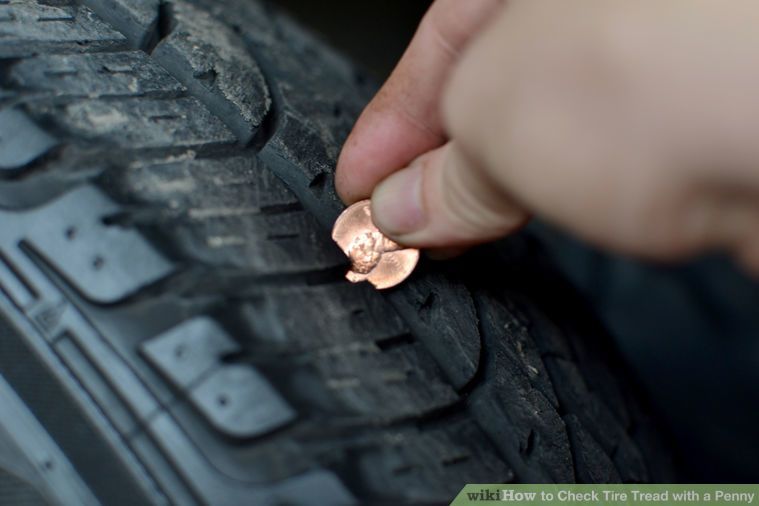 But, of course, such wheels will look logical on the new Mercedes, and not on the urban Solaris.
But, of course, such wheels will look logical on the new Mercedes, and not on the urban Solaris.
When choosing new summer tires, remember that good handling often comes with a harsh response to the road surface. And vice versa - soft tires that swallow pits and markings can break even in a simple turn at moderate speed. So choose a tire carefully, looking not only at tests on the Internet, but also at the reviews of real motorists.
How quiet your car's interior is depends not only on soundproofing, but also on tires. Summer ones, of course, are much quieter than winter ones, but there are also loud models. Sometimes the tire starts to click because of the projector, or rather, the features of its pattern, into which small stones can be packed.
There are two things to distinguish here - the wear resistance of the projector and how the tire withstands road adversity. With the first one, everything is more or less clear - a hard tire most likely goes through more, and if you are a fan of “sinking” or arranging a burnout, then the rubber can go away in a season.